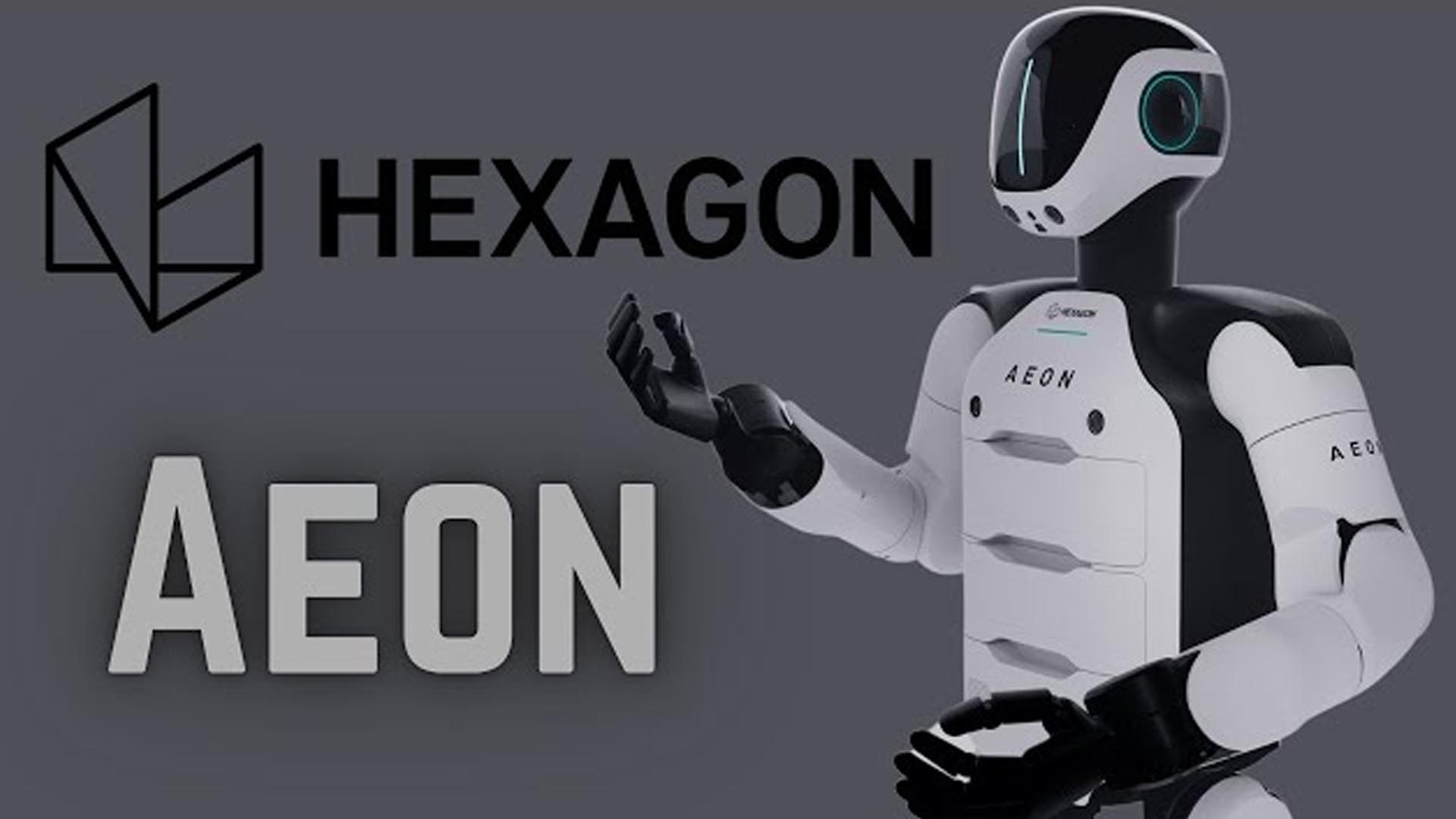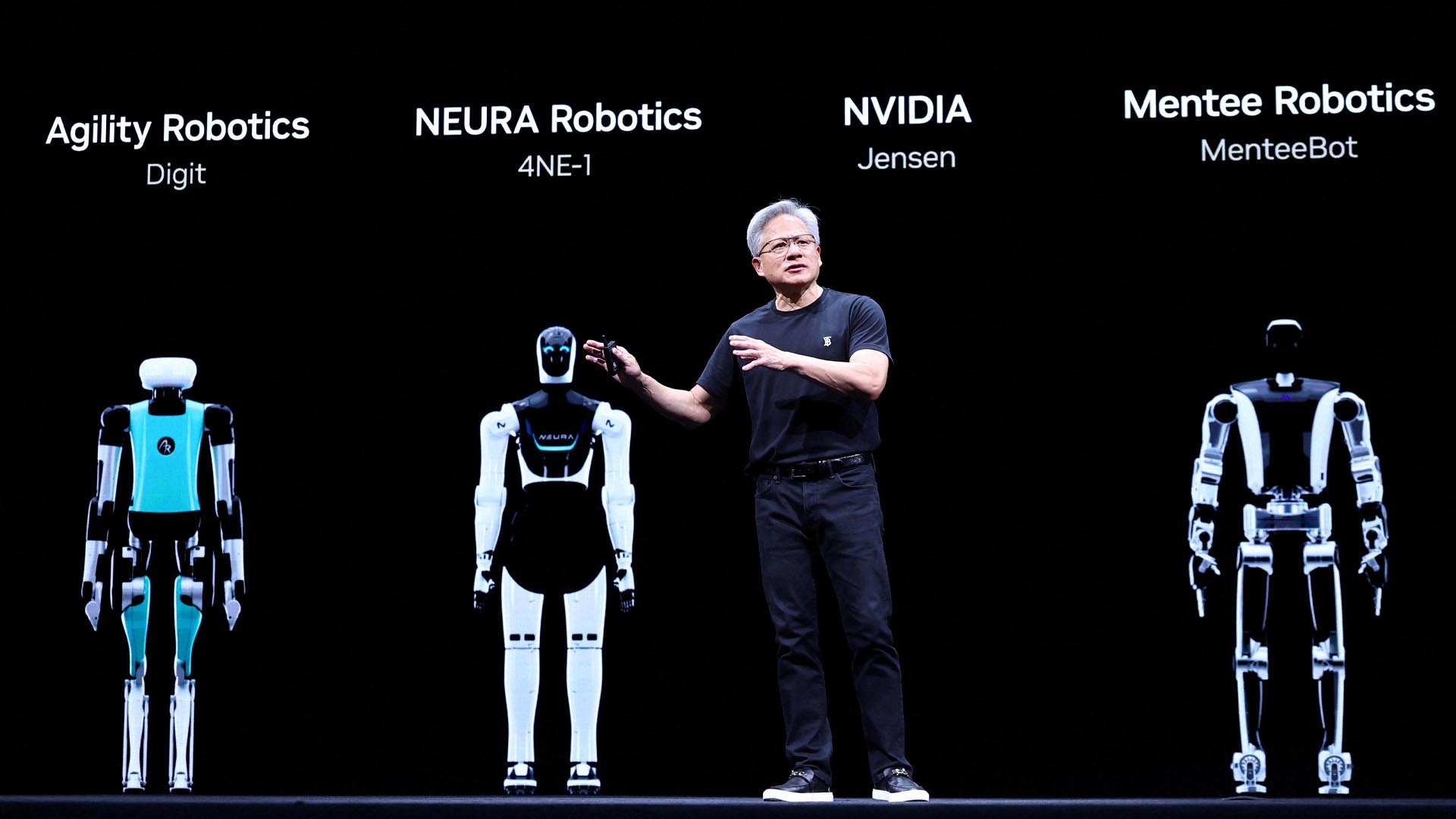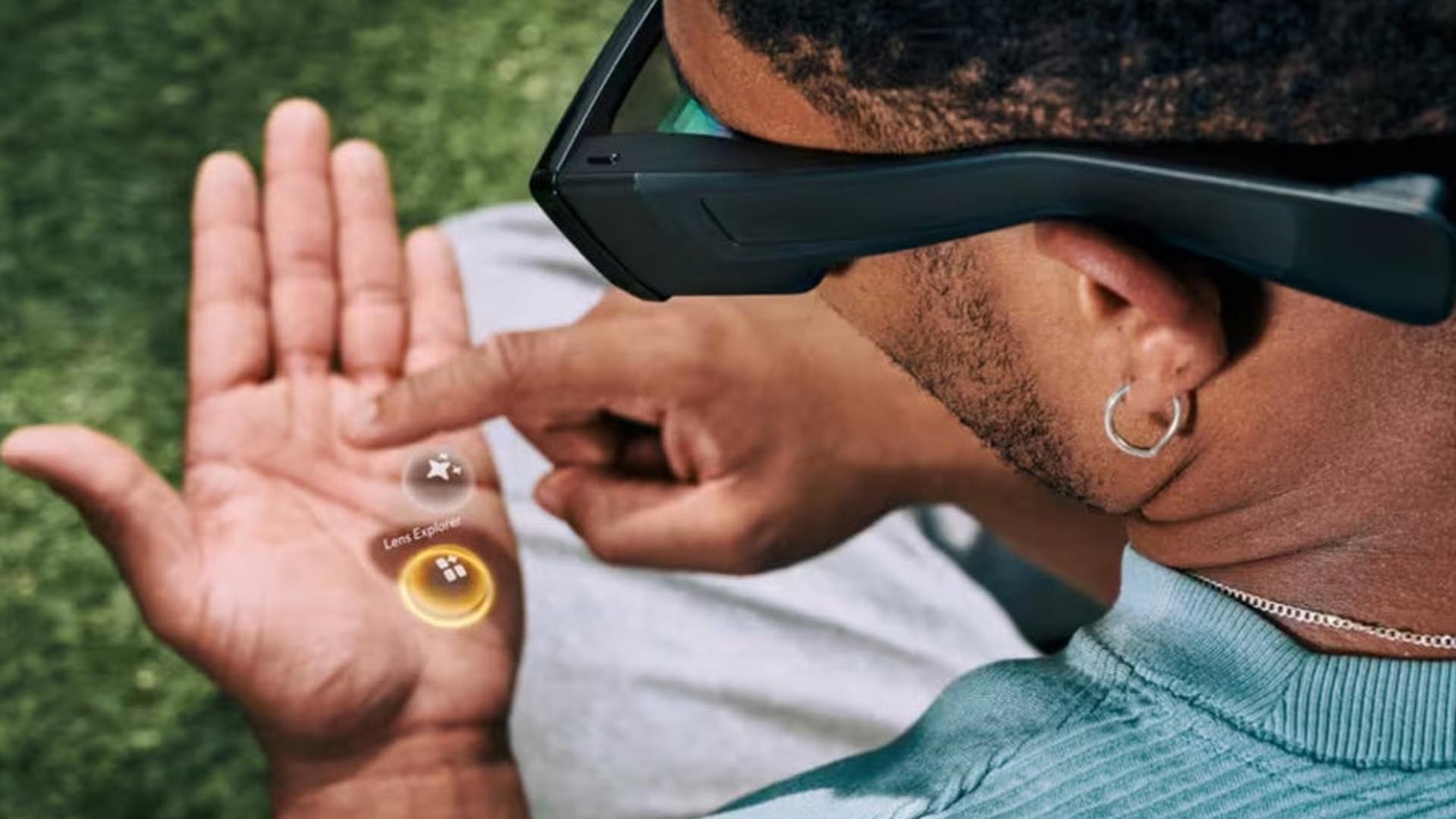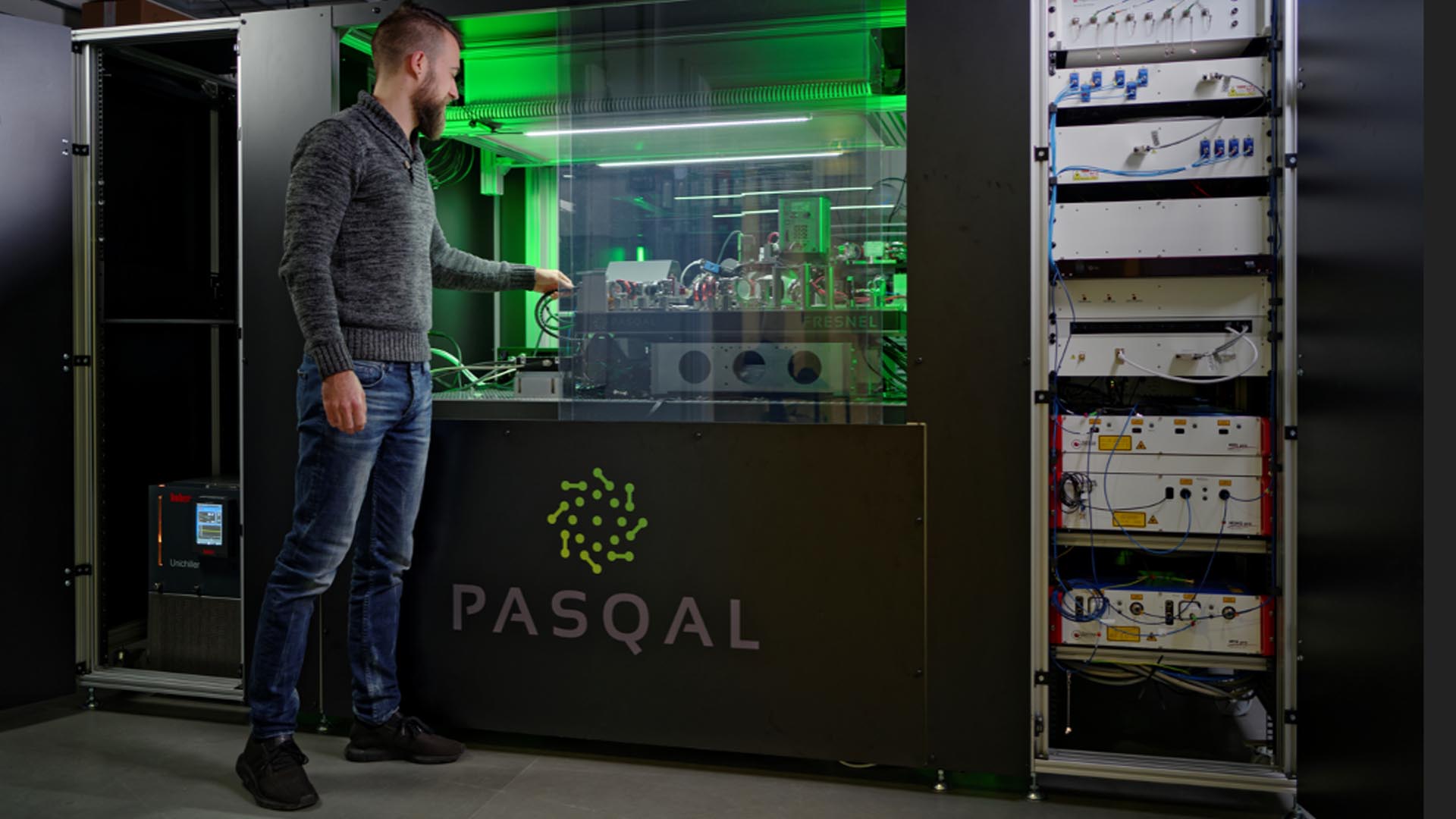Image: Ulrich Buckenlei | XR Stager Newsroom
Technovation Week 25 – Weekly Review from June 16 to 22, 2025
Technology recap of the nearly concluded Week 25: From humanoid robots and AI-driven XR for athletes to digital factories with Foxconn – this week demonstrated how rapidly key technologies like Artificial Intelligence, Spatial Computing, and Robotics are converging across industries.
Industrial Humanoids: Hexagon Unveils AEON
On June 17, 2025, Swedish technology company Hexagon introduced its humanoid robot AEON. Designed for industrial use, AEON combines AI-powered sensor technology with balanced bipedal locomotion. The robot features a battery-swapping system allowing 24/7 operation and safely navigates dynamic production environments.
Initial pilot projects are launching with companies like Pilatus and Schaeffler. AEON perceives its surroundings via sensor fusion and uses spatial AI models for adaptive motion – a potential turning point for autonomous, collaborative robotics in manufacturing.
- Agile bipedal tech → Built for complex industrial environments
- AI-based navigation → Spatial awareness via sensor fusion
- Continuous operation → Swappable batteries for 24/7 performance

Image: Hexagon | Press image AEON
The new humanoid robot “AEON” by Hexagon is designed specifically for industrial use – with a focus on precision, safety, and collaborative manufacturing.
Image source: Hexagon
Meta & Oakley: XR Glasses with AI for Athletes
On June 19, 2025, Meta and Oakley unveiled a new type of XR headset tailored for professional sports. The glasses combine real-time biometrics with spatial overlays to optimize performance. By integrating a locally running Llama-3 language model, the device analyzes movement without cloud connectivity – enhancing privacy and speed.
Runners, cyclists, and team athletes receive direct feedback on posture, pace, or exertion. The design focuses on lightness, sports compatibility, and situational coaching – XR meets functional AI.
- Sport-centric XR → Optimized for motion and endurance
- On-device AI → Fast analysis without internet connection
- Biometric integration → Real-time feedback during training

Image: Meta x Oakley | Product image
The new XR glasses by Meta and Oakley are designed specifically for athletes, combining sporty design with AI-powered navigation and performance analysis.
Image source: Meta / Oakley / Press
Foxconn & Nvidia: Humanoids in Server Manufacturing
A report from June 20, 2025, outlines how Foxconn plans to deploy humanoid robots in server manufacturing for Nvidia — specifically at a new Texas facility dedicated to AI hardware. This would mark the first time Nvidia products are assembled at scale by autonomous robots.
The goal is to combine precision, energy efficiency, and 24/7 operations for building AI servers. The humanoid robots are designed to perform complex tasks supported by camera systems, gripping intelligence, and predictive motion planning.
- Autonomous manufacturing → AI hardware assembled by AI robots
- New Nvidia facility → Texas location as a strategic hub
- Foxconn’s pioneering role → Humanoid systems in production processes

Image: Foxconn x Nvidia | Concept image
Foxconn, in collaboration with Nvidia, is building an AI-optimized server factory — where humanoid robots will automate production processes and adapt flexibly to new tasks.
Image source: Nvidia / Foxconn / Press
Unreal Engine 5.6 and MetaHuman Animator 5.6
Epic Games has introduced Unreal Engine 5.6 and MetaHuman 5.6, marking a new generation of tools for immersive real-time environments.
The updated pipeline enables realistic facial animation via AI-powered expression analysis, enhanced LODs, and seamless transitions between motion capture and real-time facial performance. MetaHuman Animator has been improved to capture nuanced expressions even with mobile devices and integrate them directly into sequences.
World-authoring has also been further optimized for open, scalable XR environments.
New features like World Partition 2.0, faster level streaming, and a modular world-building API offer creators significantly more freedom. Additionally, the engine now natively supports Apple Silicon, DLSS 4.0, and provides more precise control via Sequencer — ideal for virtual production, game development, and cinematics.
- Real-time facial capture → MetaHuman Animator 5.6 improves expression accuracy for live streams
- Open world enhancements → UE 5.6 introduces new tools for streaming, LODs, and world partitioning
- Performance boost → Rendering and hardware optimizations improve VR/XR UX

Image: Epic Games | Screenshot State of Unreal
Epic Games introduces UE 5.6 and MetaHuman 5.6 with major updates for open worlds and facial animation — enhancing real-time production workflows.
Image source: Epic Games / Press
Midjourney Introduces First AI Video Model
On June 18, 2025, Midjourney officially entered the realm of AI-generated video with the launch of its V1 video model.
The new system allows users to create short animations and dynamic moving images directly from text prompts — with a special focus on stylized scenes, loop effects, and creative transitions. With this, Midjourney extends its success in image generation to the next visual dimension.
The V1 model specifically targets creatives who want to turn ideas into visual storytelling within seconds.
Although the system is still in closed testing, early examples showcase impressively smooth motion, vibrant atmospheres, and a wide range of stylistic diversity. Midjourney emphasizes that no external video clips are processed — all content is generated entirely from scratch.
- From stills to clips → Prompts generate moving scenes with seamless transitions
- Loops & simulations → Ideal for social content, conceptual visuals, and narrative experiments
- New momentum for creative AI → Midjourney opens new use cases for creators and studios

Image: Midjourney | Press image of V1 Video Model
Midjourney launches its first AI video model — enabling creators to generate animated visual simulations and looping animations from text prompts within seconds.
Image source: Midjourney / Press
Honor Magic V5: Foldable with On-Device AI
On June 18, 2025, Honor unveiled the world’s thinnest foldable smartphone at MWC Shanghai 2025.
The new model, named Magic V5, combines cutting-edge design with next-gen hardware — including the locally running AI processor “Alpha AI,” which enables complex computations directly on the device for ultra-fast real-time responses.
Another highlight is the integrated 200-megapixel camera, specially optimized for AI-powered image processing.
Edge intelligence takes center stage here: content is analyzed and processed locally instead of being sent to the cloud. With this, Honor positions itself at the forefront not only in foldable displays but also in the future of mobile AI systems.
- Ultra-compact → Record-breaking thinness with a high-end camera setup
- Alpha AI chip → Local processing of speech, image, and sensor data without cloud latency
- Foldables with purpose → Focus on productivity, XR previews, and mobile multimodality

Image: Honor | Product image Magic V5
The world’s thinnest foldable comes from Honor — featuring an Alpha AI chip for local intelligence and a 200-megapixel camera for real-time on-device processing.
Image source: Honor / Press
Snap Introduces New “Specs” AR Glasses with SnapOS
On June 19, 2025, Snap unveiled its latest AR glasses at AWE USA in California, featuring transparent lenses and a fully proprietary operating system.
The new generation of SPECS glasses is designed specifically for immersive everyday use — with a focus on lightweight design, seamless connectivity, and an intuitive user interface for quick access to digital information in the field of view.
Particularly noteworthy is the integration of AI-powered overlays that adapt to the environment in real time.
Whether navigation, messaging, or holographic effects — the new SPECS enable a natural fusion of physical and digital reality. Snap thus positions itself as a pioneer of wearable, transparent XR technologies in the consumer space.
- Lightweight & Transparent → The new Specs are designed for everyday use, navigation, and creation
- SnapOS → Proprietary XR operating system focused on augmented interaction and creator experiences
- AI-powered overlays → Real-time holograms, object annotation, and visual guidance

Image: Snap Inc. | Product image SPECS
Snap presents “Specs,” a new AR glasses model with transparent lenses — enabling creative real-time overlays, navigation, and AI-powered holographic experiences.
Image source: Snap Inc. / Press
AWS Invests $40 Billion in AI Data Centers
Between June 14 and 17, 2025, Amazon Web Services announced a massive expansion of its data center infrastructure — focused on green energy and AI-optimized workloads.
New sites in Australia and the U.S. will be equipped with advanced cooling systems, solar farms, and energy-efficient hardware to meet growing demands in generative AI.
AWS is investing over $40 billion in these strategic infrastructures of the future.
This positions the cloud giant as a global pioneer in sustainable high-performance computing centers designed for AI-intensive applications and data-driven business models.
- $20B in Australia → One of the largest AI data centers in the Southern Hemisphere
- $20B in Pennsylvania → Energy-efficient facilities focused on AI and cloud workloads
- Solar Powered → Committed to sustainable AI scaling

Image: AWS | Visualization of an AI Data Center
Amazon Web Services is investing $40 billion in energy-efficient data centers — focusing on AI workloads, solar energy, and global cloud optimization.
Image source: Amazon / Press
MWC Shanghai 2025: AI-Native Networks & Robotics
From June 18 to 20, 2025, the Mobile World Congress Asia took place in Shanghai — with a clear focus on AI-driven telecommunications, edge intelligence, and autonomous industrial systems.
International exhibitors presented new solutions for smart networks, connected robotic platforms, and real-time communication between machines, cloud, and humans.
The spotlight was on agentic AI, next-gen mobile networks, and robot-assisted production.
MWC Shanghai 2025 impressively demonstrated how China is using high-tech infrastructure and AI-first strategies to become a global innovation leader in the telco sector.
- China Mobile → Demonstrations of agent-based network intelligence and autonomous processes
- ZTE → Multi-agent robotics for logistics and edge orchestration in industrial contexts
- AI-native telco → The future of networks as platforms for machine-driven action

Image: GSMA | Highlights from MWC Shanghai
Autonomous edge systems, telco AI, and multi-agent robotics: MWC Shanghai 2025 reveals China’s ambitions in AI-powered networks and smart manufacturing.
Image source: GSMA / MWC / Press
Bonus: Quantum Computing and the Threat to Encryption
In June 2025, French startup Pasqal unveiled new milestones in the development of photonic quantum processors — with a focus on encryption and high-performance computing.
At the forefront: hardware roadmaps to accelerate quantum algorithms that could render classic RSA standards obsolete in the medium term.
This intensifies the global race between classical cryptography and quantum-powered computing architectures.
Researchers and industry partners are working in parallel on post-quantum methods and realistic timelines for secure communication in the quantum era.
- Photonic qubits → New chips with improved error resistance and accelerated processing
- Realistic roadmaps → Startups and research teams showcase new prototypes
- Post-quantum security → Cryptographic standardization as a critical future issue

Image: Pasqal | Quantum chip concept
Startups like Pasqal are nearing practical quantum breakthroughs: new roadmaps highlight advances in photonic quantum processing and the challenge to classical encryption.
Image source: Pasqal / Press
Take Advantage of Emerging Opportunities!
The Visoric team supports companies in adopting innovative technologies — from immersive real-time applications to AI-assisted support systems.
Our services include:
- Strategy consulting and technology transfer → Harness the potential of XR, AI, and Digital Twins
- Custom solution development → From prototypes to fully deployed systems
- Training and enablement → We prepare your teams for the next tech generation
Let’s shape the transformation together — contact the Visoric team and start your journey today!
Contact Us:
Email: info@xrstager.com
Phone: +49 89 21552678
Contact Persons:
Ulrich Buckenlei (Creative Director)
Mobil +49 152 53532871
Mail: ulrich.buckenlei@xrstager.com
Nataliya Daniltseva (Projekt Manager)
Mobil + 49 176 72805705
Mail: nataliya.daniltseva@xrstager.com
Address:
VISORIC GmbH
Bayerstraße 13
D-80335 Munich


